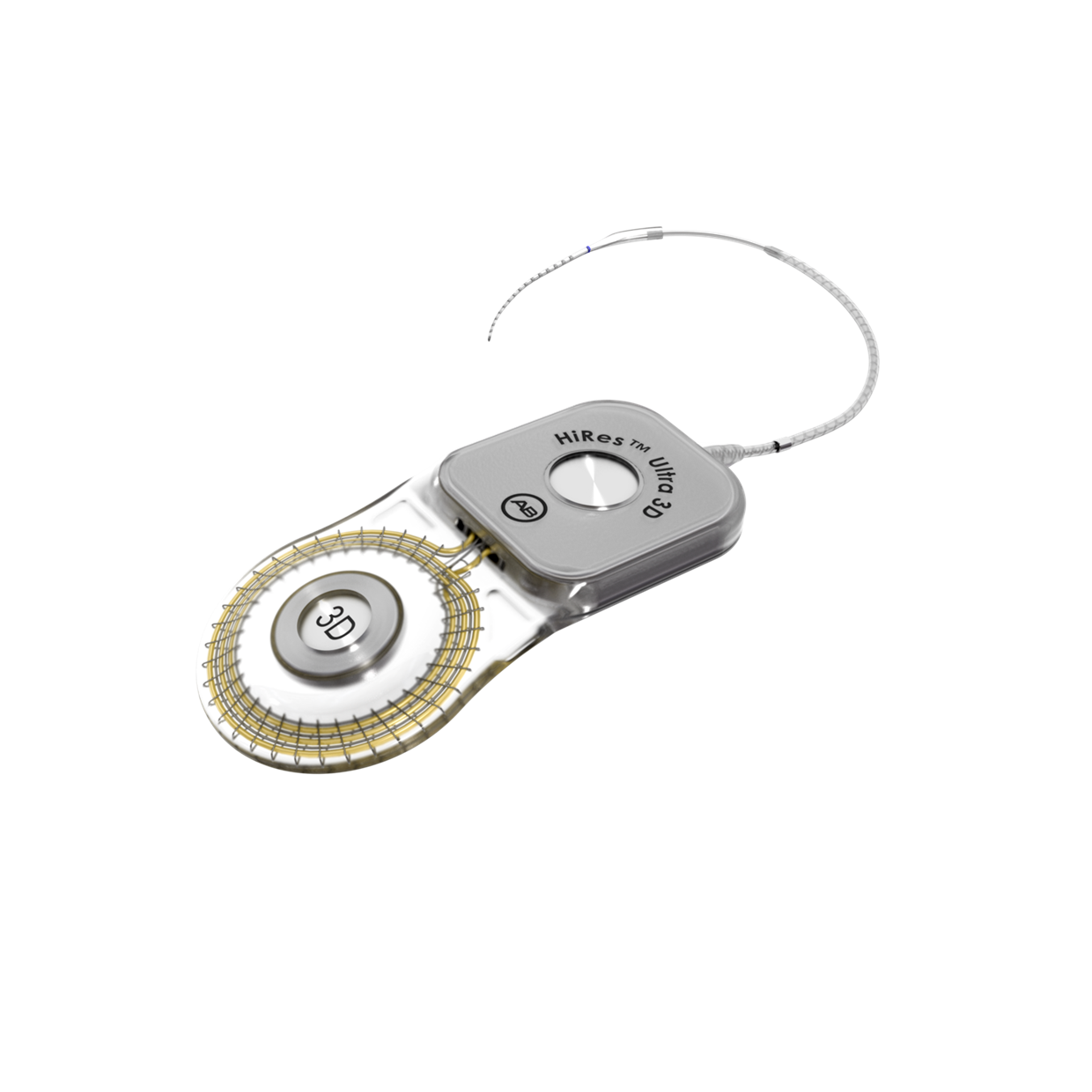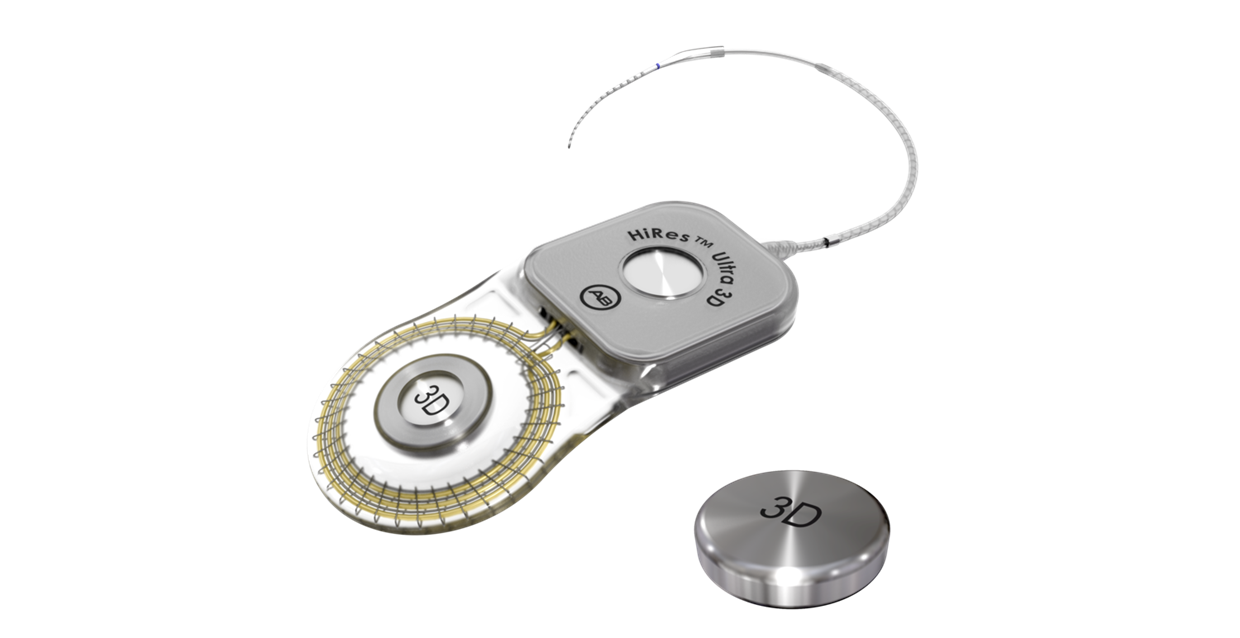Strategy and businesses
Cochlear implants business
An Advanced Bionics cochlear implant is a life-long solution for significant or complete hearing loss. Unlike hearing aids which amplify sound, cochlear implants electrically stimulate the hearing nerve, bypassing the damaged part of the ear; a wearable processor captures sound and converts it into an electrical signal which is transmitted to the implant. We work to optimize each component of this sophisticated system, offering recipients excellent hearing performance and helping surgeons and audiologists with their vital work.
Our business operates in more than 50 countries and is based on close cooperation with the surgical clinics that perform implantation, the hearing care professionals who serve our recipients before and after surgery or throughout their whole patient journey, and the researchers who study hearing function and further advance our solutions. We also work with potential recipients and their families, not just by providing our technology, but through advice, information, support groups, and online communities.
Advanced Bionics began its close R&D collaboration with Phonak nearly a decade ago, and this has been very fruitful. Each significant advance in Phonak hearing aid technology – in sound quality, speech intelligibility and directionality, connectivity, and automatic adaptive sound programs – has been extended to our sound processors, giving recipients an ever-more natural experience of life’s sounds, music, and conversations.
Key areas of activity
It is increasingly required for health reasons that people should have an MRI (magnetic resonance imaging) scan at some time during their life, but this has long been a challenge for cochlear implant recipients: the implant contains a magnet, and the powerful magnetic fields generated by the scanner can cause pain if the implant magnet is not fully aligned with them. Bandaging the head to keep it still is not always possible and is particularly hard for children. Until now, it was often necessary to remove the magnet surgically to ensure a pain-free scan, which also meant that recipients were not able to hear until it was replaced. With the launch of Advanced Bionics’ HiRes™ Ultra 3D implant this year, these challenging issues are a thing of the past: its magnet can rotate to orient itself in three dimensions, aligning perfectly with the surrounding magnetic field. Recipients can move in the scanner without pain or discomfort; the need for surgical removal or head bandaging is gone. What should be a routine procedure is now exactly that: routine.


Continuing the benefits of the close R&D relationship between Advanced Bionics and Phonak, the new Naída CI Connect accessory for our Naída CI Q90 sound processor incorporates Sonova’s SWORD chip, providing direct Bluetooth connectivity with phones, tablets, laptops and MP3 players. From hands-free phone conversation to streaming media, Naída CI Connect offers a seamless experience of today’s digital world.
Cochlear implants are advanced technology but they have now been available for many years, and we want to ensure that those who chose us in the past can still benefit from our innovations. We therefore introduced the ChorusTM sound processor, which provides several thousand recipients of our first generation implants the up-to-date benefits of all-day battery charge and integrated wireless reception, thus renewing our life-long connection with this established consumer base.
A significant growth area for cochlear implants is among adults whose hearing loss has gone beyond the point where hearing aids are effective. Here our collaboration with Sonova’s hearing instruments and audiological care businesses is a highly valuable route to these potential recipients. One good example is provided by the events that audiological care’s Vitakustik network in Germany hosted this year. They generated excellent ratings from participants, strongly positive feedback from clinics, and a more than 10% rate of direct sign-up for clinic appointments from those who attended.
When a child is born with severe hearing loss, there is generally a 12-month period before surgeons will consider a cochlear implant operation. This is not just a waiting time – it is an essential period for a child’s sensory and social development, where family interaction can make a great difference to the eventual success of the hearing solution. Our Baby Beats™ app focuses on encouraging activities that engage babies in the sensory world – the vibration and breath-patterns of speech and singing, the sight of chimes and drums – and informs families about what our solutions can do for them.
A cochlear implant is a complex system whose production requires many advanced processes. We can achieve economies of scale as our market continues to grow, but there is also a wealth of opportunities to continuously improve the efficiency of our production process and reduce the costs of the goods we sell. As an example, we achieved significant cost savings in producing core electronic components for our sound processors by bringing their manufacture in-house and making use of Sonova’s production expertise and efficiency. We are increasingly automating our manufacturing, designing to cost, optimizing our supplier base, and increasing yield.
We already benefited from such efficiency projects this year, and there are many more projects planned for the coming years. This has not just resulted in significant profitability improvement but also freed resources to invest further in innovation and expand our market and consumer access.

